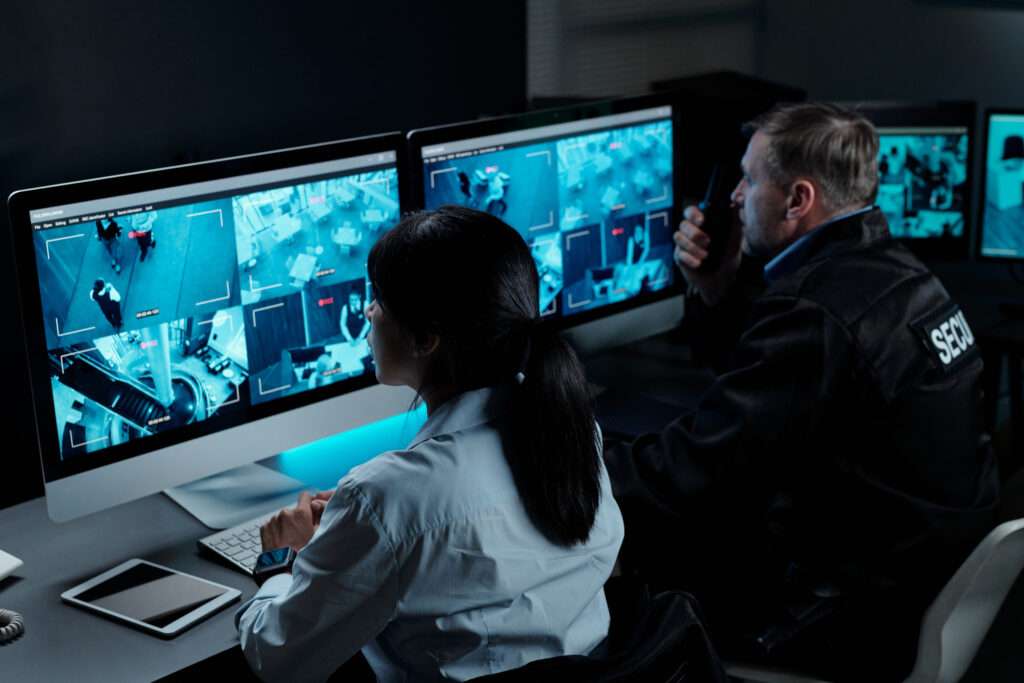
You are strolling through the supermarket, lost in thought, when suddenly, thud! A hidden spill sends you crashing to the floor. A staff member rushes over, people stare, and your back is already protesting. At that moment, you wonder: Is there any CCTV evidence for injury claims that proves this was not your fault, or will they try to pin it on you?
The answer might be hanging just above your head.
That quiet little dome in the ceiling? Yes, that’s a CCTV camera. And, when it comes to injury claims for slips, trips, and falls, it can be your best friend.
There’s a good chance a camera caught you slipping on a freshly mopped floor with no warning, and that footage might be the decisive evidence you need.
Between April 2022 and March 2023, 58,933 public liability claims were recorded by the Compensation Recovery Unit (CRU).
Fleet managers report that installing vehicle cameras and CCTV led to nearly a 50% drop in personal injury claims, suggesting just how powerful video evidence can be in proving and preventing incidents.
In this blog, we are lifting the lid on why CCTV evidence for injury claims is such a big deal, how it fits into public liability claims in the UK, the guidelines for requesting footage, and what else is considered solid evidence.
And don’t worry, we will break it all down in simple terms. Just useful information, no legalese, or jargon. We at Claim Time Solicitors believe in keeping things real, relatable, and in your favour.
So, if you have been hurt and you are not sure what to do next, keep reading. We have got your back.
Why is CCTV evidence a big deal for injury claims?
When you are injured in a public place, it often comes down to your word against theirs. That’s where CCTV footage comes in. Unlike witness memory, it doesn’t blur details or shift timelines; it shows exactly what happened.
CCTV helps by:
- Showing the exact cause (wet floor, loose tile, stray wire)
- Proving negligence (no warning signs or cleanup)
- Pinning down time and location
- Confirming or challenging witness statements
Footage doesn’t lie. It removes doubt and can shift a claim from “maybe” to a clear yes. Between April 2022 and March 2023, the CRU recorded 58,933 public liability claims. Video evidence plays a growing role in those numbers.
What else supports your claim beyond CCTV evidence for injury claims?
While CCTV is often the gold standard, it’s not the only form of evidence that holds weight. Strong cases usually include:
- Photos: Snap the scene, the hazard, your injuries
- Witness statements: People who saw it happen
- Medical records: Document your injury and treatment
- Accident reports: Especially important in public or work settings
- Receipts & financial loss records: Proof of income lost or expenses incurred
CCTV ties it all together, offering a clear narrative that’s hard to dispute.
Can you request the footage?
Yes. If you’re visible in the footage, you can legally request it under UK data protection laws.
Here’s how:
- Send a Subject Access Request (SAR) to the business or organisation
- Include specific details: date, time, location
- They have 30 days to respond or explain any delays
If the footage exists and shows you, they must either provide it or justify why they can’t.
Note: If you need footage of someone else, you’ll need a legal reason (like a formal claim), and their identity may be blurred to protect privacy.
Act fast: CCTV evidence for injury claims won’t last forever
Most CCTV systems overwrite footage every 14-31 days. Sometimes sooner. Don’t wait.
- Request it early
- Let your solicitor step in quickly to stop it from being deleted
Once it’s gone, it’s gone for good.
What if there’s no CCTV?
You can still win your claim.
Many successful cases don’t rely on footage. Solid photos, witness accounts, and medical documentation can paint a strong enough picture. A skilled solicitor knows how to piece it all together.
UK CCTV laws: Know your rights
You have more power than you think. Here’s what to remember:
- You have the right to request footage of yourself
- Cameras must be signposted
- Footage must comply with GDPR (no dodgy edits)
- Deleting relevant footage may count as evidence tampering
Legal support can help you access footage quickly and lawfully.
Why do public liability claims rely on evidence?
If you slipped in a store, cafe, office, or on a street and it wasn’t your fault, you are likely dealing with a public liability case. CCTV can:
- Show what caused it (spill, wire, uneven flooring)
- Prove how long it was there (ignored for hours or seconds?)
- Confirm if anyone acted (or didn’t)
- Reveal if safety steps were taken (signs, clean-up, repairs)
With video proof, it’s harder for insurers to deny or delay your claim.
What big claims tell us?
The UK’s largest known public liability payout exceeded £20 million. That’s rare, but it highlights the power of strong evidence. Most claims fall between £10,000 and £50,000, depending on:
- Severity of injury
- Impact on your work and life
- Quality of evidence (especially CCTV)
How can a solicitor help?
CCTV footage alone doesn’t win a claim. It needs context, expert handling, and legal weight. That’s where we come in.
At Claim Time Solicitors, we:
- Gather CCTV, photos, records, and witness statements
- Push back when insurers underplay your injury
- Handle all paperwork and negotiations
- Offer clear advice with zero jargon
Ready to start?
We make claims straightforward, supportive, and no-win, no-fee.
- Free consultation
- UK-wide service
- Call 0800 970 2727 or request a call-back
Don’t just take the fall. Take the first step toward justice.
